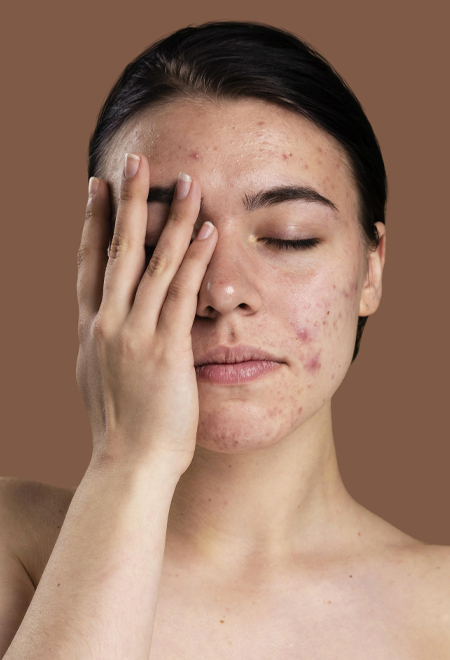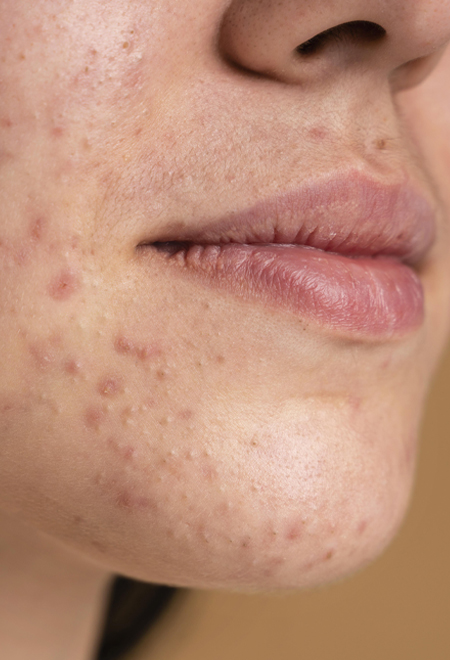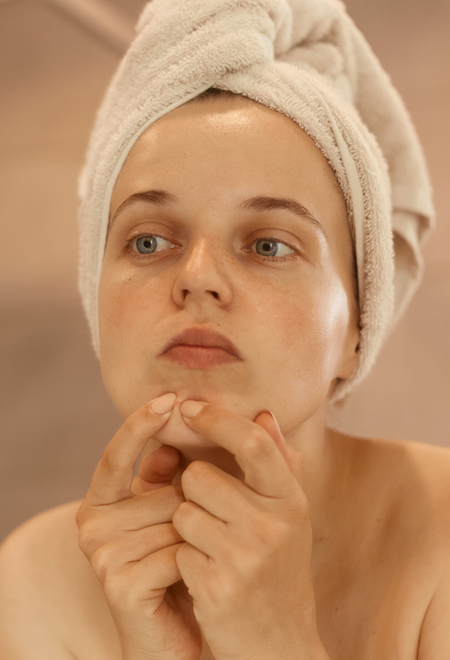Nişantaşı - İstanbul

Acne Scar
Acne scars are a condition observed when nodular cystic acne is left untreated or when treatment is delayed. Acne scars can lead to significant social challenges and a lack of self-confidence in some patients. Various treatment methods are employed today for addressing acne scars, which may sometimes be concurrent with active acne. Acne scarring is most commonly found on the face, followed by the back.
Feel Free to Reach Out to Us for Acne Scar Treatment!
CONTACT USAcne Scar
Acne scars are generally categorized into two distinct groups. These include acne scars that are depressed below the skin surface and acne scars that are raised above the skin. Raised acne scars further subdivide into those healing in a keloid form and those healing as hypertrophic acne scars. Depressed scars encompass icepick scars, boxcar scars, and rolling scars.
• Icepick Scar
Scars in this group typically resemble puncture wounds caused by piercing objects like nails. These scars have a diameter of less than 2 mm and a depth of approximately 2 mm. Icepick scars extend down to the fat layer at the bottom of the skin.
• Boxcar Scar
This type of scar typically exhibits a round or oval shape, measuring around 0.5 mm. It may also present a vertical collapse appearance, characterized by sharp edges and a crater-like structure. While not causing as pronounced depressions as Icepick scars, they contribute to a distinctive appearance.
• Rolling Scar
These scars typically manifest as undulating on the skin, reaching a depth of approximately 4 mm.

Acne Scar Treatment
If timely acne treatment is not administered, and there is a familial genetic history of scarring, the likelihood of developing acne scars increases.
What are the Methods of Acne Scar Treatment?
When acne is not treated promptly, it leaves scars as it heals. Deep and inflamed acne poses a higher risk of scarring compared to other types. The treatment of acne scars often involves a combination of methods, such as fractional laser, gold needle (fractional radiofrequency microneedling), subcision, platelet-rich plasma, and the use of thin hyaluronic acid fillers under the scar tissue. These methods are employed together or separately based on individual needs to achieve a smoother skin texture in the affected areas.
Let’s take a look at these treatment methods one by one and in detail:
• Fractional Laser Treatment
Fractional laser treatment is meticulously designed to inflict minimal damage to the skin, targeting points less than one millimeter in size. This approach ensures that the damaged areas are surrounded by islands of intact skin, facilitating swift healing.
The primary objective of the treatment is to stimulate the synthesis of new collagen bundles in the scarred areas and reconstruct damaged collagen fibers in the existing scar tissue. The number of sessions required ranges from 1 to 3, depending on the density of the acne scar, with an average interval of 1 month between sessions. Anesthesia is administered to the treatment area by applying numbing creams approximately 30-60 minutes before the procedure. Following the procedure, a cold compress is applied for comfort and protection. The average duration of the procedure is about 30 minutes. As the newly sensitive and rejuvenating skin undergoes restructuring after the procedure, the crucial post-procedure care involves thorough moisturization and protection from the sun. The winter months, characterized by less intense sunlight, are more favorable for laser resurfacing procedures, allowing the skin to undergo renewal. After the procedure, symptoms typically dissipate within 3-5 days on average. While the results of the procedure become evident with each session, the recovery process continues for up to 1.5 months after the last session.

• Gold Needle Radiofrequency (Fractional Radiofrequency Microneedling) Treatment
This is one of the most popular and effective treatments in recent times. The procedure involves the use of heads with personalized gold needle tips. Numbing creams is applied to the treatment area approximately 30-45 minutes before the procedure. On average, the procedure takes about 5-10 minutes. Depending on the individual’s needs, 3-4 sessions are typically performed once a month.
The procedure involves restructuring damaged collagen bundles in the dermis layer using radiofrequency energy without causing damage to the upper layer of the skin. Gold Needle Radiofrequency is a safe procedure that can be performed during the summer months. Following the procedure, the skin quality improves, becoming firmer and more radiant day by day, all without interrupting your social life. Any slight redness and edema typically disappear quickly within 2-3 hours after treatment, and there is no scabbing after the procedure. In addition to gold needle radiofrequency treatment, platelet-rich plasma is used to expedite skin healing and stimulate new collagen synthesis.
It is crucial to apply sunscreen and moisturize the skin following the treatment. While the results of the treatment become apparent with each session, the process of neocollagenization (new collagen production) persists even after the last session, with the skin continuing to mature for up to 6 months.
SUBCISION
Through subcision, the problematic collagen bands forming the scar beneath the skin are broken down, generating new collagen bands and repairing the scar tissue. Platelet-rich plasma, derived from the patient’s own blood, is injected under the skin during the subcision procedure, facilitating accelerated healing through platelet cells rich in growth factors and new collagen production.
